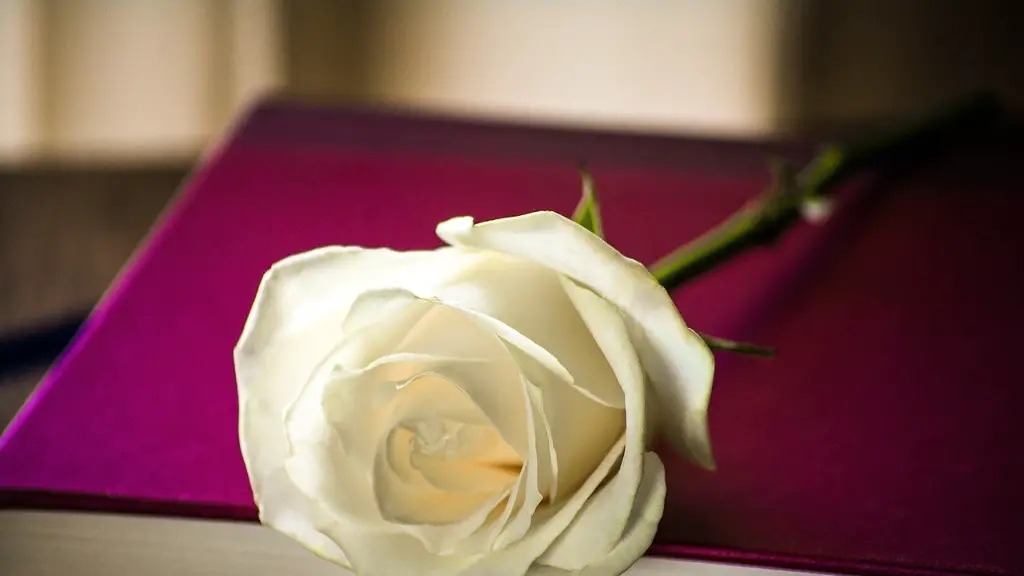Rhythm
Rhythm is the most important of the elements of poetry, because it helps set the tone of the poem. It is a pattern of stressed and unstressed syllables that give the poem its movement. Each poem has a meter, which is the beat or pulse of the poem’s phrase. Poems can also have a cadence of a certain kind, or even a certain kind of rhythm. While meter is the organizational process in poems, cadence is the musicality of how the poem is spoken. Metrics can be written, but cadence is read aloud. It’s the way each line flows off the tongue, the way it shifts from phrase to phrase.
One form of meter that is often used in poetry is iambic pentameter. This is when a line has five iambs – two syllabic units that consist of an unstressed syllable followed by a stressed syllable. Iambic pentameter is used to create a stately, formal atmosphere in a poem. It is often associated with the epic poems of antiquity, or of the Elizabethan era.
Another element of rhythm that affects the sound of a poem is rhyme. Rhyme is when two or more words sound alike at the end of a line. Rhyme is often used to create a pattern or structure in a poem, and can be used to give the reader an insight into the poem’s message or theme. The use of rhyme can also evoke an emotional response in the reader.
Rhythm and Meter
Rhythm and meter are often used together to create a certain sound in a poem. Meter is the pattern of syllables, and rhythm is how those syllables are organized. For example, a poem written in iambic pentameter will have five iambs, or two syllables that consist of an unstressed syllable followed by a stressed syllable. This kind of meter is often used for formal or traditional poetry, to create a stately, formal atmosphere.
Another form of poetic meter is blank verse. Blank verse uses a specific kind of metrical pattern, but doesn’t follow a rhyme scheme. This kind of metrical pattern gives the poem a sense of flow and is often used for longer poems and plays.
Rhyme and Alliteration
In addition to rhythm and meter, poets also use rhyme and alliteration to create specific sound patterns in their poems. Rhyme is the repetition of sounds at the end of words. Alliteration is the repetition of sounds at the beginning of words. These elements can be used to create a certain mood or evoke an emotional response in readers. For example, a poet might use alliteration to create a sense of urgency or excitement.
Alliteration can also be used to create a kind of musicality. Alliterative patterns in a line of poetry can be used to create a rhythm, even if the line doesn’t follow a metrical pattern. Alliteration can also be used to draw attention to certain words or ideas in a poem.
Figurative Language
Figurative language is often used to create a certain sound in a poem, as well as to evoke an emotional response. Figurative language includes metaphors, similes, and allusions. Metaphors are comparisons between two unlike things, and similes are comparisons between two things using like or as. Allusions are references to other works. Allusions can be used to draw attention to certain ideas or themes in a poem.
Figurative language is often used to create a certain rhythm in a poem. The use of metaphors and similes can add another layer to the poetic structure, and allusions can be used to draw attention to certain parts of the poem. Figurative language can also evoke an emotional response in the reader, because it can be used to illustrate a certain idea in an unexpected way.
Syntax and Diction
Syntax and diction are also important elements of poetry. Syntax is the arrangement of words and phrases in a sentence, and diction is the way words are chosen and used. Syntax and diction together can create a certain rhythm in a poem, as well as create a certain atmosphere.
For example, a poet may choose to use short, simple sentences in a poem to create a certain rhythm, while at the same time conveying a certain mood or atmosphere. The way words are used can also affect the sound of a poem. Choosing unusual words or phrases can create a certain tone or atmosphere.
Conclusion
In conclusion, there are many elements of poetry that can affect the sound of a poem. Rhythm and meter are two of the most important elements, as they help to set the tone of the poem and create a certain sense of flow. Rhyme and alliteration can be used to create a certain musicality in a poem, while figurative language can evoke an emotional response. Syntax and diction are also important elements, as they can create a certain rhythm or atmosphere. These elements all combine to create the sound of a poem.

